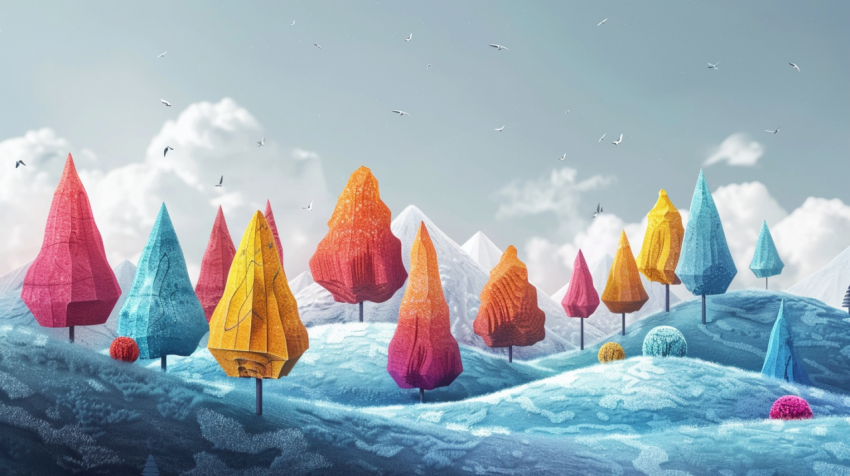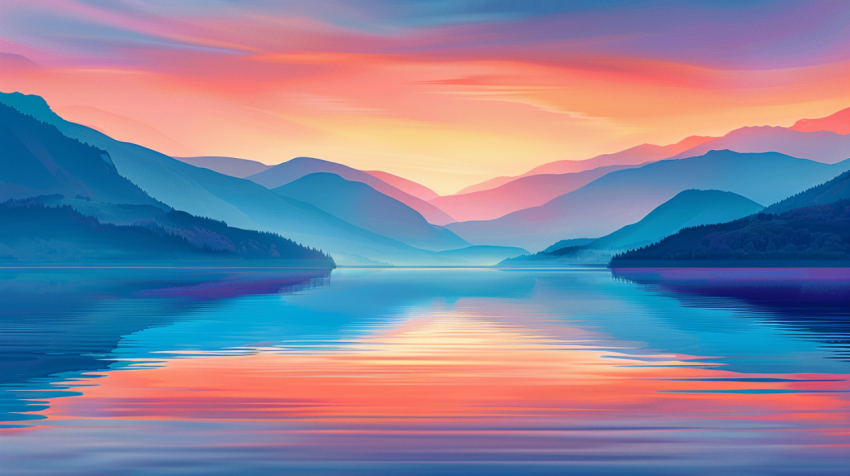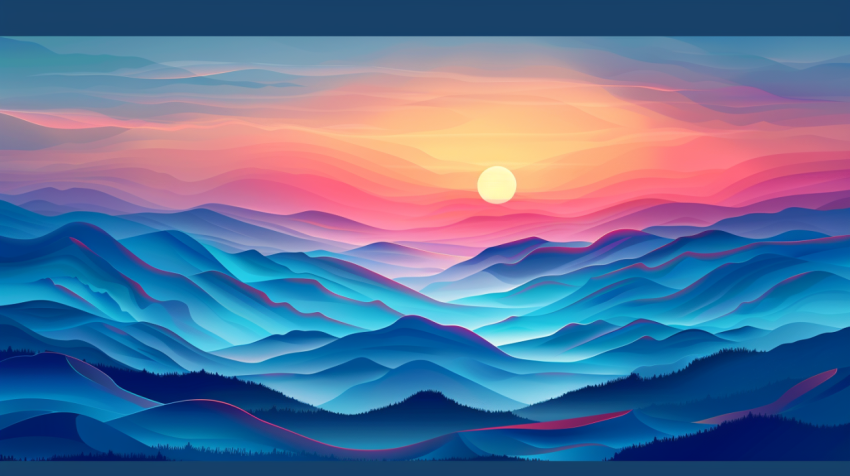











Capturing the Beauty and Wonder of the Natural World Through Art
Nature illustration is a specialized field of art that focuses on depicting the natural world, including plants, animals, landscapes, and ecological processes. Nature illustrators combine artistic talent with scientific accuracy to create visually appealing and informative images that educate, inspire, and foster appreciation for the beauty and complexity of nature. Their work can be found in scientific publications, field guides, educational materials, museums, galleries, and more.
1. The History of Nature Illustration: From Cave Paintings to Scientific Documentation
The depiction of nature in art has a long and rich history:
- Prehistoric Cave Paintings: Some of the earliest examples of art depict animals and plants, suggesting an early human fascination with the natural world.
- Ancient Civilizations: Ancient Egyptians, Greeks, and Romans incorporated natural elements into their art, often with symbolic or religious significance.
- Medieval Herbals: Illustrated manuscripts featuring medicinal plants, often with detailed and surprisingly accurate depictions.
- The Age of Exploration: European explorers documented the flora and fauna of newly discovered lands, leading to a surge in botanical and zoological illustration.
- The Development of Scientific Illustration: With the rise of modern science, nature illustration became increasingly focused on accuracy and detail, playing a crucial role in scientific documentation and classification.
- 18th and 19th Centuries: A golden age of natural history illustration, with artists like John James Audubon, Maria Sibylla Merian, and Ernst Haeckel producing stunningly detailed and scientifically valuable works.
2. The Role of the Nature Illustrator: Bridging Art and Science
Nature illustrators play a unique role in bridging the gap between art and science:
- Scientific Accuracy: They strive for accuracy in their depictions, carefully observing and rendering the details of their subjects.
- Aesthetic Appeal: They create visually engaging images that capture the beauty and wonder of the natural world.
- Education and Communication: Their work helps to educate the public about nature, biodiversity, and conservation issues.
- Scientific Documentation: Nature illustrators often work with scientists to document new species, illustrate anatomical features, and create visual representations of scientific data.
- Conservation Awareness: Their art can raise awareness about endangered species and threatened habitats, inspiring conservation efforts.
3. Techniques and Mediums: Tools of the Trade
Nature illustrators employ a variety of techniques and mediums:
- Watercolor: A popular medium for its transparency, luminosity, and ability to create delicate washes and fine details.
- Pen and Ink: Used for creating precise lines and detailed drawings, often combined with watercolor washes.
- Gouache: An opaque watercolor paint that produces vibrant, matte colors.
- Colored Pencils: Offer a wide range of colors and allow for detailed rendering and layering of colors.
- Acrylics: Fast-drying paints that can be used on a variety of surfaces.
- Oil Paints: Traditional medium that allows for blending and creating rich textures, but with longer drying times.
- Digital Illustration: Using software like Adobe Photoshop, Illustrator, and Procreate to create digital paintings and drawings.
- Field Sketching: Many nature illustrators work in the field, sketching and painting directly from observation.
- Photography: Often used as a reference tool for detailed illustrations.
4. Subject Matter: Exploring the Diversity of Nature
Nature illustrators depict a wide range of subjects:
- Botanical Illustration: Focusing on plants, flowers, trees, and other botanical subjects.
- Zoological Illustration: Depicting animals, birds, insects, fish, and other fauna.
- Wildlife Art: Often portraying animals in their natural habitats.
- Landscape Painting: Capturing the beauty of natural landscapes, such as mountains, forests, and coastlines.
- Ecological Illustration: Illustrating ecological processes, relationships between organisms, and environmental issues.
- Paleoart: Reconstructing and illustrating prehistoric life, including dinosaurs and other extinct creatures.
- Micromorphology: The detailed illustration of microscopic organisms.
5. The Importance of Observation and Research: Accuracy and Detail
Nature illustration requires keen observation skills and often extensive research:
- Direct Observation: Illustrators spend time studying their subjects in the field or in museum collections, carefully observing their form, structure, color, and behavior.
- Reference Materials: They may use photographs, field guides, scientific publications, and other resources to ensure accuracy.
- Anatomical Studies: For zoological and botanical illustration, a strong understanding of anatomy is essential.
- Collaboration with Scientists: Nature illustrators often collaborate with scientists to ensure the scientific accuracy of their work.
6. Career Paths for Nature Illustrators: Diverse Opportunities
Nature illustrators can pursue a variety of career paths:
- Freelance Illustration: Many nature illustrators work as freelancers, taking on commissions from publishers, museums, research institutions, and other clients.
- Scientific Illustration: Working with scientists to create illustrations for scientific publications, textbooks, and educational materials.
- Book Illustration: Illustrating field guides, nature books, and children's books.
- Museum Illustration: Creating illustrations for museum exhibits, displays, and educational programs.
- Fine Art: Some nature illustrators focus on creating fine art pieces for galleries and collectors.
- Teaching: Teaching nature illustration courses and workshops.
- Animation: Creating animations for documentaries or educational purposes.
7. Famous Nature Illustrators: Masters of the Craft
Many talented nature illustrators have made significant contributions to art and science:
- John James Audubon (1785-1851): Renowned for his detailed and life-size paintings of North American birds, published in "The Birds of America."
- Maria Sibylla Merian (1647-1717): A pioneering naturalist and artist who documented the insects and plants of Suriname.
- Ernst Haeckel (1834-1919): A German biologist and artist known for his intricate illustrations of marine organisms, published in "Art Forms in Nature."
- Beatrix Potter (1866-1943): Famous for her charming illustrations of animals in children's books, such as "The Tale of Peter Rabbit."
- Roger Tory Peterson (1908-1996): An influential ornithologist and artist who created the Peterson Field Guides, which revolutionized birdwatching.
8. The Future of Nature Illustration: New Technologies and Conservation
- Nature illustration continues to evolve with the advent of new technologies, such as digital illustration and 3D modeling.
- Nature illustrators are increasingly using their art to raise awareness about environmental issues and to promote conservation efforts.
- There is a growing appreciation for the importance of nature illustration in science, education, and art.
Conclusion:
Nature illustration is a captivating art form that combines artistic skill with scientific observation. Nature illustrators play a vital role in documenting the beauty and diversity of the natural world, educating the public about nature, and inspiring conservation efforts. From the meticulous detail of botanical illustration to the dynamic energy of wildlife art, nature illustration offers a unique window into the wonders of the living world. As we face growing environmental challenges, the work of nature illustrators becomes even more important in fostering appreciation for the natural world and inspiring us to protect it.
Nature illustration, nature illustrator, nature art, scientific illustration, botanical illustration, zoological illustration, wildlife art, wildlife illustration, natural history illustration, nature drawing, nature painting, watercolor painting, pen and ink drawing, field sketching, nature journaling, John James Audubon, Maria Sibylla Merian, Ernst Haeckel, Beatrix Potter, Roger Tory Peterson, nature illustration techniques, nature illustration tutorials, nature illustration courses, nature illustration books, nature illustration for beginners, nature illustration career, freelance illustrator, science illustrator, medical illustrator, nature photography, conservation art, environmental art, bird illustration, flower illustration, animal illustration, insect illustration, landscape painting, plein air painting, illustration.

